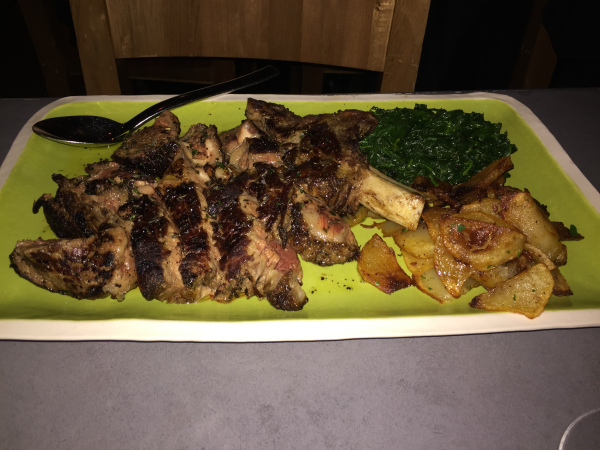|
The biggest culprit when preparing grass-fed meat is overcooking due to its lower fat content than conventional meat. Many unsuccessful grass-fed meat experiences are due to improper cooking methods. This beef is best for rare to medium cooking. If you like well-done meat, then cook your grass fed beef at very low temperatures in a sauce or liquid to add moisture; using a crock pot is a good option. Reduce the temperature
Reduce the temperature of standard (grain fed) beef recipes by 50 degrees. The cooking time for grass-fed beef will be about 30% – 50% less than standard (grain fed) beef, even at the lower temperature. Use a digital meat thermometer (120-145 degrees for rare-medium) and don’t overcook your meat. The meat will continue to cook when removed from heat. Since the meat cooks quickly, it can progress from perfectly cooked to overcooked in less than a minute. Lamb can be cooked at slightly higher temperatures and for slightly longer than beef. Thaw completely before cooking For best results, thaw your meat in the refrigerator or if it is important to thaw more quickly, place the vacuum sealed package in warm water. Thawing completely will eliminate the “weeping” of watery red liquid onto your plate.completely will eliminate the “weeping” of watery red liquid onto your plate. Use olive oil, tenderizer, or marinate for enhanced flavor and moisture Grass-fed meat is low in fat. Coating the meat with olive oil will add to the flavor and moisture and also prevent sticking. Using a meat tenderizer (a 16-bladed puncturing tool) helps the meat accept marinade more generously. If you do not own a meat tenderizer, marinate your beef, especially the lean cuts like the NY Strip Steak and Sirloin Steak. Stove top cooking steaks, while a bit risky, is preferable to grilling because you can control the heat more accurately. However, our steaks are thick, which helps protect them from overcooking and also allows you to grill them with greater success. The heat on a grill is correct when you can hold your hand next to the meat on the grill for 3 seconds. Baste to add moisture throughout the grilling process. Use a digital meat thermometer to closely monitor your meat while cooking. Try this: Sear … then roast One of our favorite steak preparation methods, also used by many chefs, is to sear a steak or lamb chop quickly over a high heat on each side (two-four minutes per side) to seal in its natural juices and then place in a pre-heated 400 degree oven to finish the cooking process (about 4-6 minutes). Preheat the oven or pan or skillet you plan to cook in starting at a low temperature and slowly raising the temperature. When roasting, sear the beef or lamb first to lock in the juices and then place in a pre-heated oven. Use moisture from sauces to add to the tenderness when cooking your roast. Cut across the grain When you cut the meat, cut across the grain as this will improve texture because you are cutting the fibers in the meat into shorter segments. Let it rest before eating Let the beef or lamb sit in a warm place for about ten minutes before enjoying.
2 Comments
|
Archives
March 2017
Categories
All
Follow us on Facebook and Instagram!
|
Meat raised with integrity in the Root District of Norwich, Vermont

 RSS Feed
RSS Feed